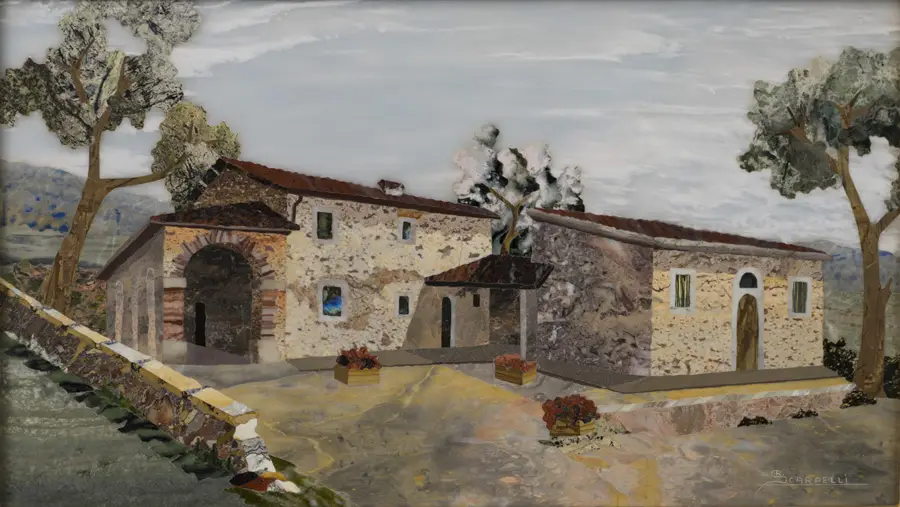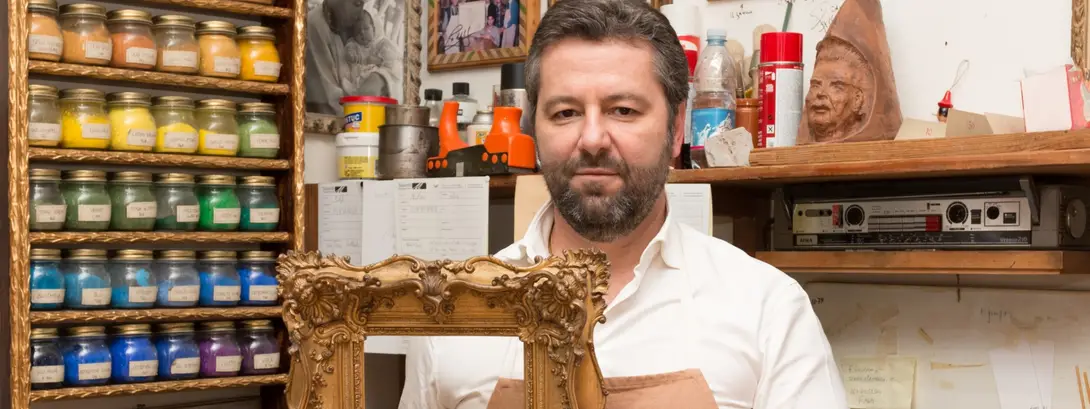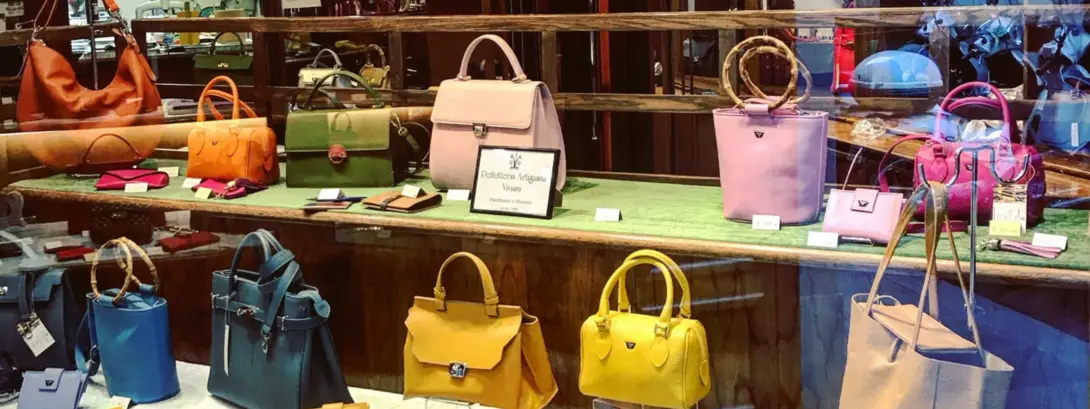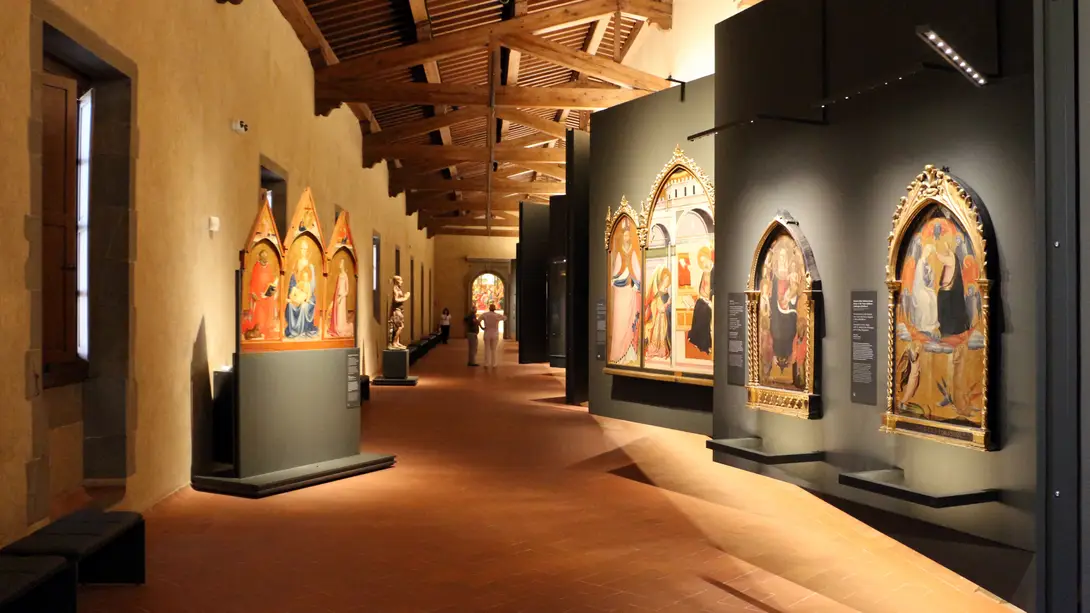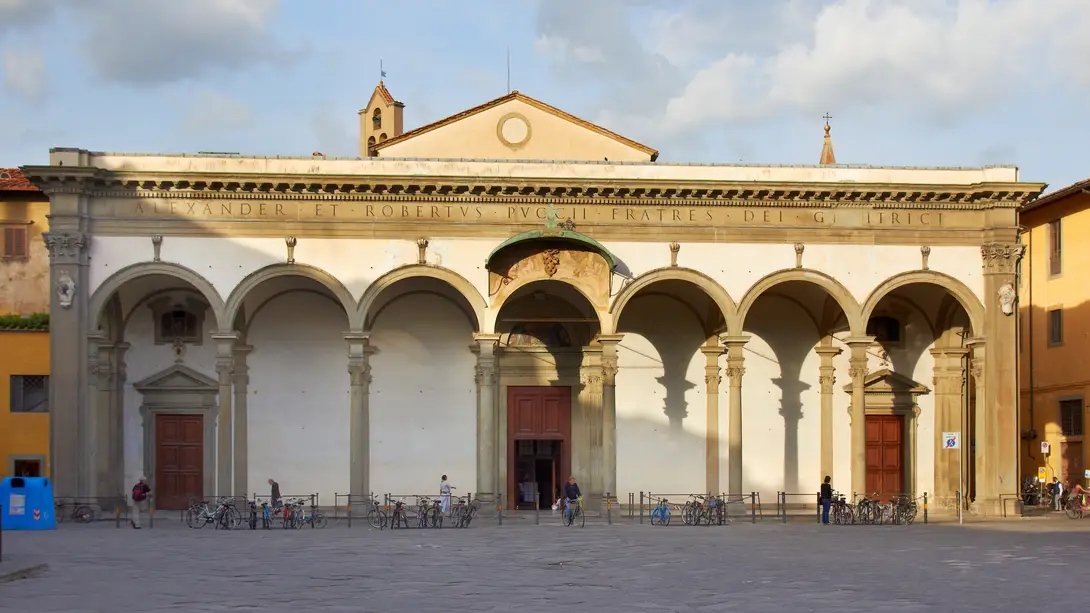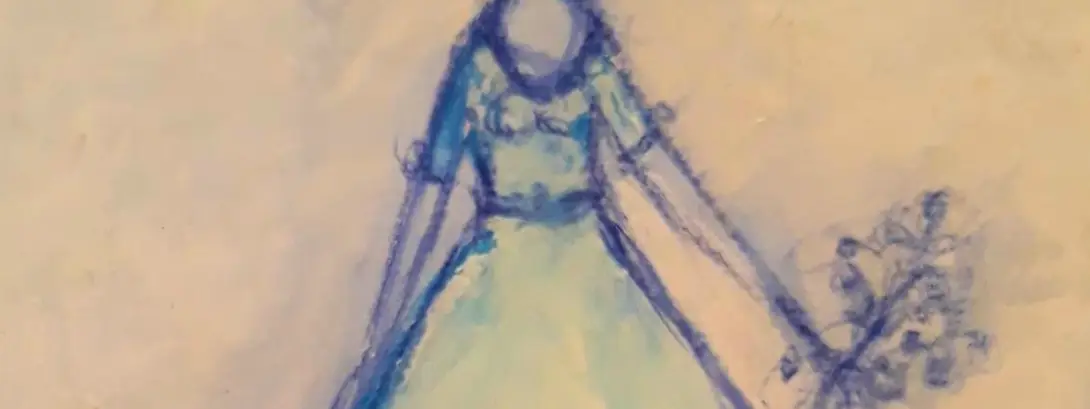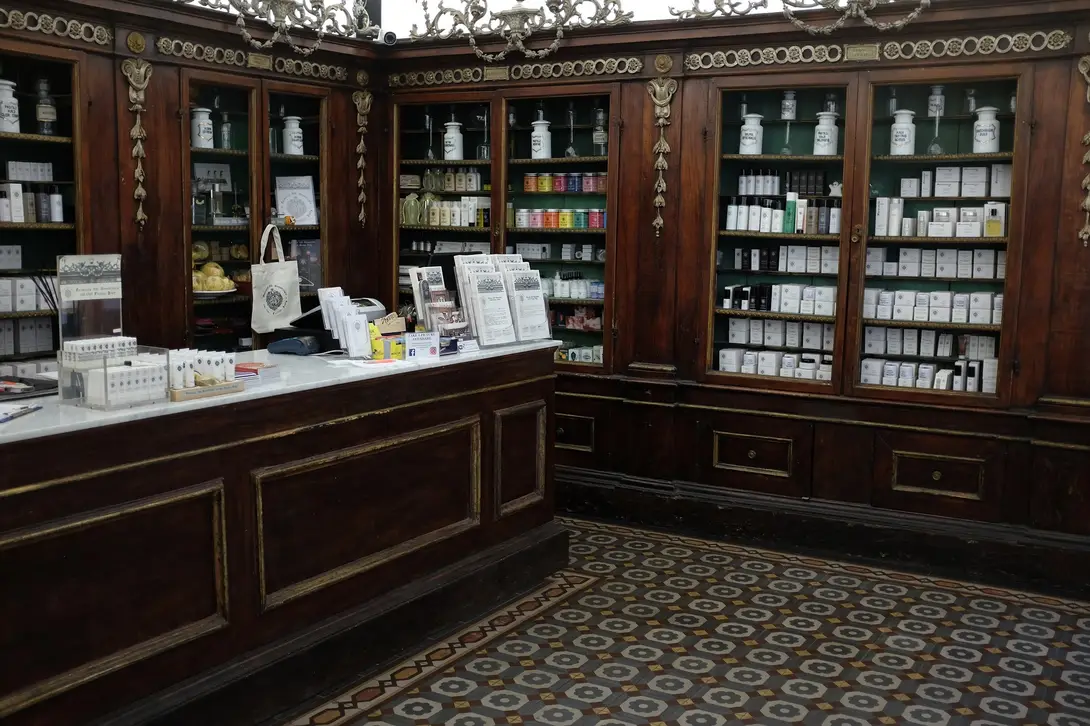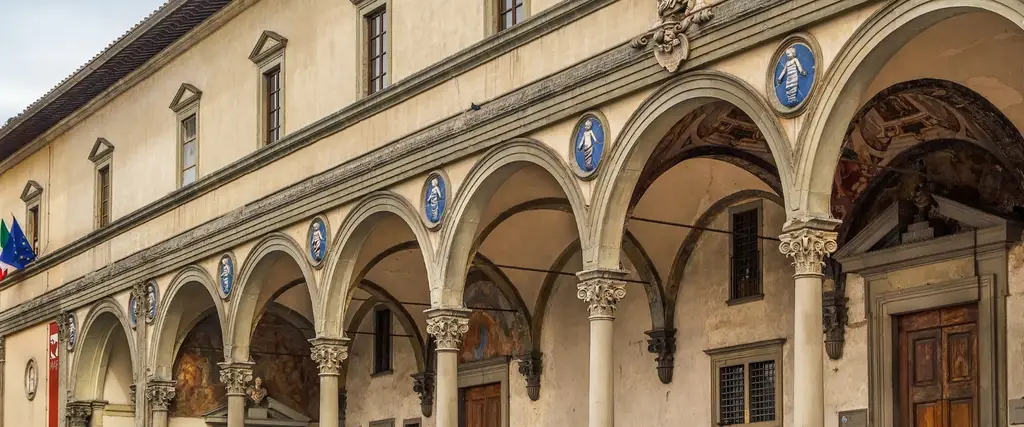
Renaissance Geometries
The beginning of the modern age sees the human being as the protagonist of his own time and the architect of his own destiny. Humanistic philological studies restore to classical culture the value and importance that the Middle Ages had completely removed. Man is reevaluated in his rationality and as part of the civil consortium and the nature that surrounds him. All branches of knowledge are affected by this "renaissance."
Renaissance urbanism theorizes the Ideal City, which underlies an exemplary model of life and government, valuing the spaces in which man relates to his fellow man and is able to best express his ingenuity, culture and skills. Just as in classicism - the forum in ancient Rome and the agora in Athens - the Renaissance square is the place par excellence where human assembly expresses itself and where daily life takes place, a place that responds to strict rules of perspective organization of space, where architectural design employs proportions and measurements that give the whole harmoniousness.
In Florence, Piazza della Santissima Annunziata is one of the earliest examples of Renaissance architectural design. The most prominent architects of the time contributed their studies and works to the qualification of the area where the Basilica stands. Filippo Brunelleschi in 1419 kicked off the rearrangement of the Piazza, designing the loggia of the Spedale degli Innocenti, around which subsequent projects were developed.
In 1444, Michelozzo started the construction of the present Basilica of the Santissima Annunziata , which would rise on the oratory founded by the Servi di Maria in honor of the Virgin. Antonio Manetti, between 1447 and 1452, built the first one-arched portico in front of the church, which was later enlarged between 1599 and 1601 by Giovanni Battista Caccini.
Facing and mirroring the Loggia of the Spedale degli Innocenti, the Loggia dei Servi di Maria was built between 1516 and 1525, designed by Baccio d'Agnolo and Antonio da Sangallo the Elder. Taking Via dei Servi, towards Santa Maria del Fiore, on the right stands Palazzo Grifoni, built by Bartolomeo Ammannati in 1563 using exposed brick and stone for the rustication, cornices, windows, serlianas and friezes.
On the left we find the Palazzo delle due Fontane, specially renovated to become the twin of Palazzo Grifoni. In the first half of the seventeenth century the square was enriched with precious elements of street furniture: the equestrian monument to Grand Duke Ferdinand I by Giambologna, completed in 1608 by Pietro Tacca who also designed the two bronze fountains with marine figures in 1629.
Piazza della Santissima Annunziata defines the conceptual perfection of the ideal City, bringing harmony for the urbanistic study employed in centuries of architectural interventions, for its proportions, symmetries and specularity.
We offer a selection of artisans practicing their craft in the Santissima Annunziata neighborhood and in close proximity.
Comune di Firenze
Los lugares
Etapas
Brunelleschi Rotunda
A short walk from Piazza Santissima Annunziata is the Brunelleschi Rotunda , a sober building with a long history.
Filippo Brunelleschi designed it in the 1430s as a centrally planned building, part of the Santa Maria degli Angeli Monastery complex. The date 1437 can still be read engraved in the masonry. The rotunda as a building type, inaugurated by Brunelleschi, was particularly popular from the late 15th century until the mid-16th century.
The building, however, was not completed. The walls were covered with a roof in the 17th century, and in the 19th century rooms were built at the top, used by sculptor Enrico Pazzi as a studio.
The Rotunda was remodeled by Rodolfo Sabatini in 1937 following Brunelleschi's design : an attempt was made to complement the Renaissance structures with a new portion with a dry language more related to the contemporary.
After various subsequent uses, the building has recently been used as the home of the Medici Museum.
Scarpelli Mosaici
The Scarpellis, Masters of Art, create mosaic works by continuing the ancient tradition of Florentine commesso in semi-precious stones. The masterpieces they create emerge from their profound experience in the selection of stones and the choice of colour tones that the materials offer in nature.
Scarpelli's masterpieces can be admired all over the world.
Bottega d'arte Maselli
The business, established in 1955 as an art workshop, is part of the ancient Florentine tradition of artistic craftsmanship, boasting a national and international private clientele. Today the shop is a small artisan workshop that, thanks to its experience, passion and attention to detail, is able to offer servicesof impeccable quality for frame work; from the production of custom-made artistic frames of any model, designed by us or at the customer's request, to the realisation of gouache gilding in pure gold, silver-plating and mechanizing, to the restoration of wooden and pastel frames.
Among the most significant works we can mention the frame for the 'Grisoni' painting, kept at the Uffizi Gallery in Florence, the restoration for the Vatican City, the frame for Domenico del Ghirlandaio's 'Nativity', located in the altarpiece of the Basilica of S. Lorenzo in Florence, and other restorations for the same basilica.
Pelletteria Artigiana Viviani
The Pelletteria Artigiana Viviani is located in Via Guelfa, in the historical centre of Florence. Founded in 1965 by Renato Viviani, it has distinguished itself throughout its history for the elegance and durability of its handcrafted leather products.
Still today, the Viviani family hands down the historical Tuscan tradition of handcrafting, creating true works of Florentine craftsmanship with precious collections of bags and accessories. Unique pieces made by hand from top quality materials.
Museo di Storia Naturale dell'Università di Firenze - Botanical Garden, Giardino dei Semplici
The Botanical Garden, called also “Giardino dei Semplici”, created by the Medicis as a garden for medicinal plants (the “Simples”) in 1545, are among the oldest Gardens in the world. Between the 16th and 17th centuries, it enjoyed a period of great splendour. It covers an area of over two hectares, indoors and outdoors.
In its warm and cold greenhouses, built in the nineteenth century and the largest in Italy, are placed tropical and subtropical plants including the collections of Cicadae, of particular interest, Ficus, Palms, an ancient collection of citruses, succulent and aquatic plants, in addition to a rich collection of plants for traditional ethnobotanical uses.
Outdoors we find the vast collection of edible plants, the flowerbeds of medicinal and poisonous plants, the Zen garden and two acclimatization beds for exotic palms and Cicadae, hydrangeas in numerous varieties, the historical collection of azaleas, the pools with aquatic plants, among which there are species worthy of conservation, in addition to the lotus flowers and water lilies. Three display cases contain a small collection of carnivorous plants.
In the Garden, there are more than 200 trees, among which the magnificent 5 monumental trees, including the yew, planted in 1720 - the oldest specimen in the garden - and the cork oak of 1805.
Museo degli Innocenti
This museum collects the historical and artistic heritage of the ancient Spedale degli Innocenti, a building designed at the beginning of the 15th century byFilippo Brunelleschi, in order to welcome the abandoned children (the "Innocents"), in a complex full of refectories, cloisters and dormitories. The children were called nocentini (which is also a very popular family name in Florence).
The museum is made of two different parts: the Art Gallery houses works of art, especially paintings, made between the 14th and the 18th century, such as an “Adorazione dei Magi” by Domenico Ghirlandaio, a “Madonna col Bambino” attributed to Sandro Botticelli, and glazed terracottas by Luca and Andrea della Robbia; on the façade, terracotta roundels represent children in swaddling clothes, showing themselves to the world.
Another, touching part is the section of the museum dedicated to the memory of the lives of abandoned at the Spedale, and it features babies’ small objects left as a mean of identification, called signs.
The rich collection of documents in the Archive shows the life at the Spedale through the centuries.
The Bottega dei ragazzi (Children Workshop) offers activities for children between 3 and 11 with their families, applying the teaching of the Renaissance workshops: “learning by doing”.
The 13th century terrace hosts the Caffè del Verone, a café with a beautiful view, accessible even without the museum ticket.
Basilica della SS. Annunziata
The basilica is the main Marian shrine in Florence. It was founded in 1250 by the "Seven Saints" of the order of the Servants of Mary; with its facade, contiguous to the Brunelleschi's facade of the Spedale degli Innocenti, it constitutes one of the sides of the scenographic, homonymous square.
The frescoed cycle of the Chiostrino dei Voti, before the entrance to the church, is an anthology of the early Florentine mannerism, with fine frescoes by Andrea del Sarto, Pontormo, Rosso Fiorentino.
he interior, mainly decorated in the Baroque era, contains numerous masterpieces, including the highly venerated fourteenth-century image of the Annunciation, inside the temple designed by Michelozzo.
On the occasion of the Jubilee 2025 the basilica is a jubilee church.
Daniela Meza
An Italo-Cilena painter, I graduated from the Faculty of Art, University of Concepciòn Chile. I won a scholarship from the Italian Ministry of Foreign Affairs to study at the Accademia di Belle Arti in Florence.
I attended courses in ceramic decoration, gilding and engraving.
In 1997, I opened my Gallery - Studio in Via dei Servi, after which I dedicated myself totally to painting.
Farmacia SS. Annunziata
In 1561, the apothecary Domenico di Vincenzo Brunetti, a member of the Physicians and Pharmacists Guild, moved his shop to these premises, which had previously housed another “spezieria”, managed by the Benedictine Sisters of San Niccolò.
The SS. Annunziata pharmacy was specialized in galenic formulations and remedies for skin care and beauty.
The 17th-century furnishings of the sales area consist of three display cases made of dark wood with gold decorations. The counter has been severely damaged during the flood of 1966.
The pharmaceutical equipment, mainly dating from the 19th century, includes twelve jars from the Ginori manufactory. Although ancient tradition is still preserved, today the pharmacy owners work with modern technologies and new ingredients for preparations.

